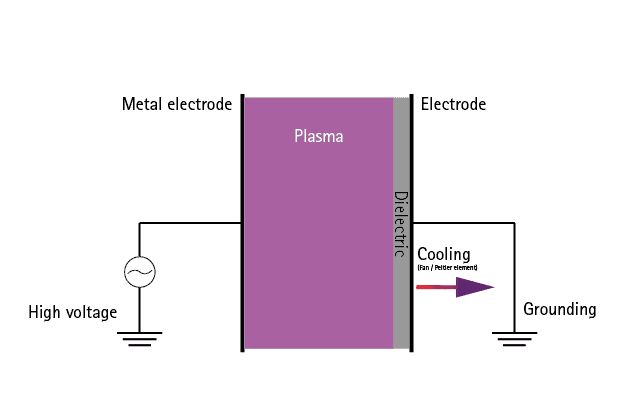Dielectric barrier discharge
Dielectric barrier discharge (DBD) also known as silent electrical discharge, is an AC gas discharge at atmospheric pressure. For this type of discharge, it is typical that there is at least one discharge space in the current path between the metallic electrodes and, connected in series, at least one dielectric. For the generation of a DBD plasma, a high-frequency voltage is applied, resulting in plasma in the gap between the electrode and the dielectric.

At atmospheric pressure, ignition occurs in the gas volume in a large number of thin discharge filaments that are present only for a short time, which we refer to as microdischarges. Here, the dielectric performs the function of stopping the discharge buildup in a microdischarge at an early stage of discharge by limiting further charge supply. As a result of the charges accumulated on the dielectric tower, a local opposing field is created, causing the field strength within a microdischarge to fall below the critical value required to maintain ionization in a few nanoseconds. However, this limitation becomes effective only very locally, so that many microdischarges form on the dielectric surface independently of each other.

When low-temperature plasma is generated in the air or in another oxygen-containing gas mixture using DBD technology, ozone is produced. The properties of ozone are used in DBD technology, among other things, for the treatment of drinking water and post-treatment of waste water or for odour elimination and germ reduction.
Traditionally, DBD plasma is mainly used for surface decontamination or surface disinfection.
Learn about our products >>



